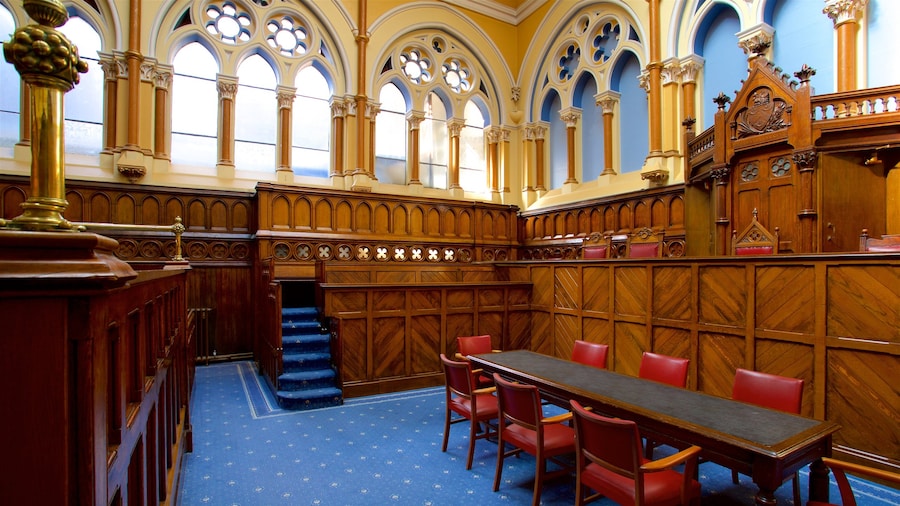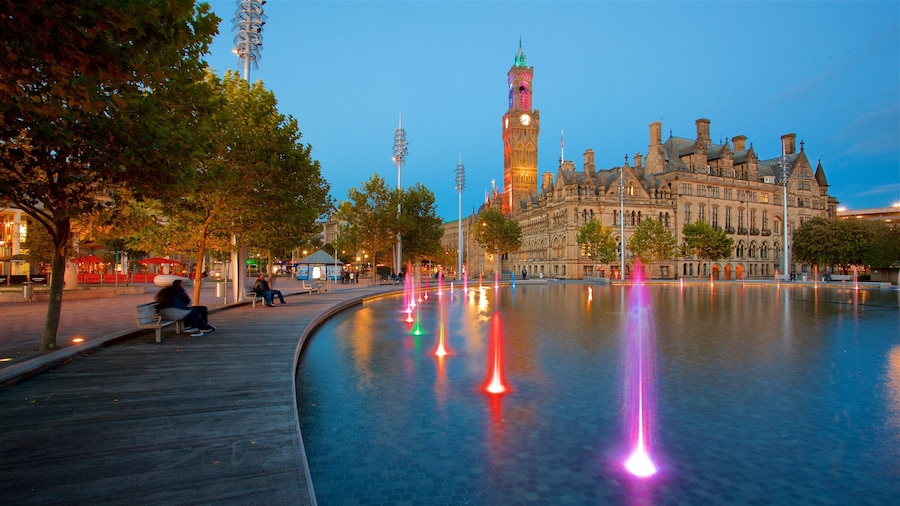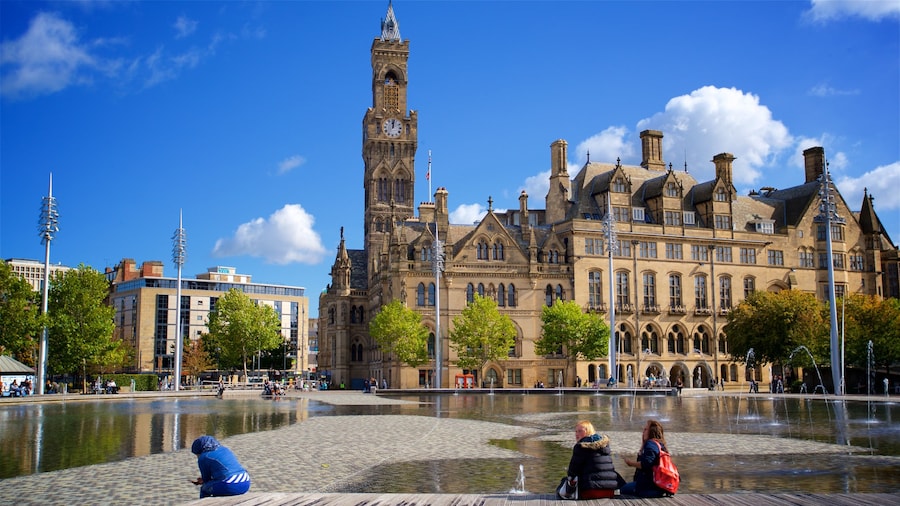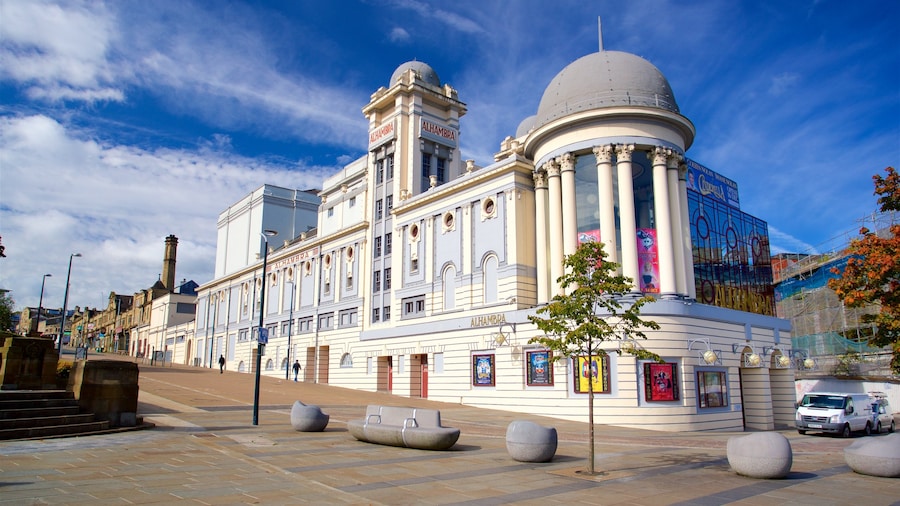This Gothic masterpiece once played an important part in the world of wool and was a hangout for socialites. Today, it features a bookshop and café.
As one of Bradford’s most iconic structures, the Wool Exchange dominates the center of the city with its Venetian and Gothic Revival architecture. Dating back to 1864, the building played a major role in the wool trade that helped to develop the city. Enter the building and notice its church-like ambiance.
The site has long contained a vast and elegant bookshop belonging to Waterstones. Browse the countless tomes packing the black shelves that harmonize well with the exchange’s dark interior patterns. Purchase toys, stationery and other products from the shop. Appearing to hover above the bookshop is a mezzanine hosting a café.
Imagine the warehouse in its heyday, when vendors tempted customers with their freshly sheared wool. The space has a religious ambiance, with light entering through the high arched windows that are split into circular segments. Think about the intriguing social rules in the structure, where a membership and a table at the old Spinks’ restaurant were valued in high society.
Step outside to admire the tall clock tower, with its jagged spires. Snap photos of the red-and-yellow patterns on the sandstone façade, noticing the busts of historic figures. Besides the building is a pedestrian alley lined with benches, offering peaceful respite from the busy city center.
Visit some of the shops, cafés and restaurants near the Wool Exchange, which lies in the heart of the city’s commercial district.
The Wool Exchange is a little northeast of Centenary Square in the center of Bradford. Walk north from Bradford Interchange for 5 minutes or take a bus to one of the structure’s surrounding stops. The bookshop inside the Wool Exchange opens daily from morning to early evening and is free to enter. Note that the site is also used for offices.
See nearby sights such as the Peace Museum, St. George’s Hall and the Broadway Bradford.



















